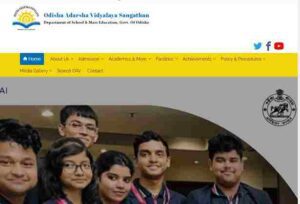
Part-A – (40 Questions)
Unit-I: History, Culture & Heritage of Rajasthan –
Pre & early history of Rajasthan. Age of Rajputs: Major dynasties of Rajasthan and the achievements of prominent rulers. Emergence of Modern Rajasthan: factors of socio-political awakening of 19th century; Peasants and tribal movements of 20th century; Political struggle of 20th century and the integration of Rajasthan. Visual Art of Rajasthan – Architecture of forts and temples of Rajasthan; sculpture
traditions of Rajasthan and various schools of painting of Rajasthan. Performing Arts of Rajasthan – Folk music and musical instruments of Rajasthan; folk dance and folk drama of Rajasthan.
Various religious cults, saints and folk deities of Rajasthan. Various dialects and its distribution in Rajasthan; literature of Rajasthani language.
We’ar On Whatsapp – Click To Join
Unit-II: Geography, Natural Resource & Socio-Economic Development of
Rajasthan –
Geography of Rajasthan: Broad physical features- Mountains, Plateaus, Plains & desert; Major rivers and lakes; Climate and Agro-climatic regions; major soil types and distribution; Major forest types and distribution; Demography characteristics; Desertification, Droughts & Floods, Deforestation, Environmental Pollution and Ecological Concerns. Economy of Rajasthan: Major Minerals- Metallic & Non-Metallic; power Resources-Renewable and Non-Renewable; Major agro based industries- Textile,
Sugar, Paper & Vegetable oil; Poverty and Unemployment; Agro food parks.
Unit-III: Current Events and Issues of Rajasthan and India –
Important Persons, Places and Current events of the State. National and International events of importance. New Schemes & Initiatives taken recently for welfare & development in Rajasthan.
Part B – (110 Questions)
(1) Descriptive Statistics:
Classification, tabulation and frequency distribution. Diagrammatic and Graphical Representation: Bar diagram, Pie chart, histogram, frequency polygon, frequency curve. Measures of central tendency: Arithmetic mean, geometric mean, harmonic mean, median, mode, quartiles, deciles and percentiles. Measures of Dispersion: Range, quartile deviation, mean deviation standard deviation, variance, co-efficient of variation, moments, measures of skewness and kurtosis.
(2) Probability:
Classical and Axiomatic approaches of probability, Conditional Probability, Bayes theorem, Simple problems on Probability. Random variable and Mathematical Expectation with applications, Chebychev’s inequality, Probability distributions: Probability mass function, Probability density function and their properties. Concept of moment generating function, cumulant generating function
and characteristic function.
(3) Theoretical distributions:
Discrete probability distributions: Bernoulli, binomial, Poisson, negative binomial, geometric and hyper geometric. continuously probability distributions: Rectangle, normal, gamma and beta type one and type two and Cauchy. Sampling distributions: Chi-square, t-distribution, F-distribution their applications and inter-relationship.
(4) Correlation, Regression and Multivariate Analysis:
Karl-Pearson’s coefficient of correlation and Spearman’s rank correlation co-efficient, simple linear regression, method of least squares. Multivariate Normal Distribution, Hotelling’s T 2 distribution. Discriminant, Principal Component and Factor Analysis. Wishart’s distribution and its properties.
(5) Sampling methods:
Simple random sampling with and without replacement, stratified random sampling, cluster sampling, systematic sampling, sampling for proportions.
(6) Experimental Design:
Concept of analysis of variance (ANOVA) for one way and two-way classified data, uniformity trials, principles of design of experiments. Completely Randomized Design (CRD), Randomized Block Design (RBD), Latin Square Design (LSD), missing plot technique, 22 and 23 factorial experiments in RBD, complete and partial confounding
(7) Theory of estimation and Testing of Hypothesis:
Point and interval estimation, properties of estimators. Methods of estimation: method of least squares and maximum likelihood estimation. Confidence internal and confidence limits. Concept of hypothesis, types of errors, Neyman-Pearson’s lemma, parametric tests for large and small samples. Non-parametric tests: run, sign and median.
(8) Time Series Analysis and Index Number:
Components, Measurements of Trend, Seasonal, Cyclical and irregular variations, Autocorrelation, Auto
Regression, Periodogram. Uses, types, tests and limitations of index numbers, construction of index numbers, simple and weighted aggregate method, Simple and weighted average price-relatives, Chain base index numbers, base shifting, Splicing and Deflating of Index numbers, cost of Living index numbers.
(9) Agriculture Statistics and Statistical Organization in India:
Importance of Statistics in Agriculture, Agricultural statistical system in India, Agricultural Census, Livestock Census, Land use statistics. Agriculture Survey. National Agricultural Production Index. Crop production Index, CSO, NSSO, National Income Statistics, Population Census.
(10) Interpolation, Extrapolation and Numerical Integration:
Finite differences, divided differences, Newton’s forward and backward interpolation, Newton’s divided difference interpolation, Lagrange’s interpolation, Starling’s interpolation and Bessel’s interpolation formulae, Simpson’s 1/3rd and 3/8th rule of numerical integration.
Linear Programming: Graphical method of solution of linear programming in two variables, convex sets and their properties, simplex method, Assignment problems, transportation problems.
(11) Matrices:
Various types of matrices, their basic operations and properties. Rank of a Matrix; Invertible matrices and their inverses. Determinants: Determinants of a square matrix and their properties. Solution of system of linear equations in two or three variables using inverse of a matrix. Theory of equations: Relation between the roots and coefficients of general polynomial equation in one variable. Transformation of equations. Descartes’ rule of signs.
(12) Calculus:
Partial derivatives, curvature, asymptotes, envelopes and evolves, maxima and minima of functions up to two variables, Beta and Gamma functions, double and triple integrals.
Advanced Calculus: Mean value theorems (Rolle’s, Lagrange’s, Taylor’s theorems), sequence and series with convergence properties.
(13) Ordinary and Partial differential equations:
Linear differential equations of first order and higher degree, Clairaut’s form, Linear differential equations of constant coefficients, ordinary homogeneous differential equations, Linear differential equations of second order with variable coefficients. Partial differential equations of first order, solved by Lagrange’s method.
(14) Integral transforms and Special functions:
Hypergeometric functions, Legendre’s polynomials, Bessel’s functions. Recurrence relations and orthogonal properties. Laplace transform, inverse Laplace transform. Fourier sine and cosine transforms. Convolution theorem.
Other Post For You : Other Exam Syllabus








